#matilda of boulogne
Photo






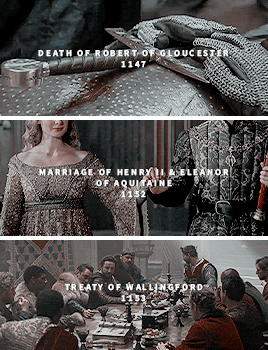
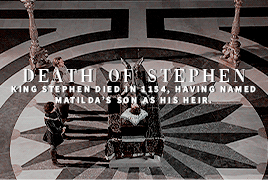
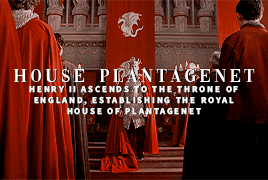
↳ a brief guide to house plantagenet history: the anarchy (part 1)
#house plantagenet#henry i#henry ii#stephen i#empress matilda#matilda of boulogne#eleanor of aquitaine#the anarchy#white ship#english history#history#historicalevents*#plantagenetguide*#my gifs#creations*
399 notes
·
View notes
Photo

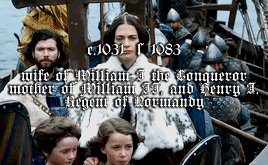
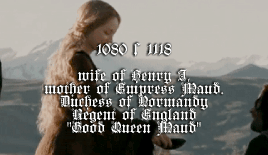
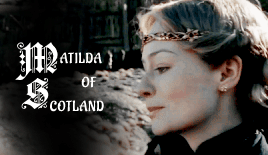

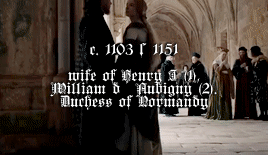
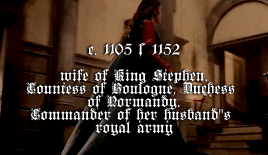
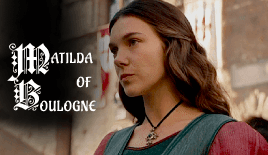


— House of Normandy: QUEENS ♕
#historyedit#matilda of flanders#matilda of scotland#adeliza of louvain#matilda of boulogne#empress matilda#empress maud#history#perioddramaedit#periodedits#gifshistorical#onlyperioddramas#perioddramasource#women in history#english history#fancast#userperioddrama#userbennet#duchessofhastings#my edit
348 notes
·
View notes
Text
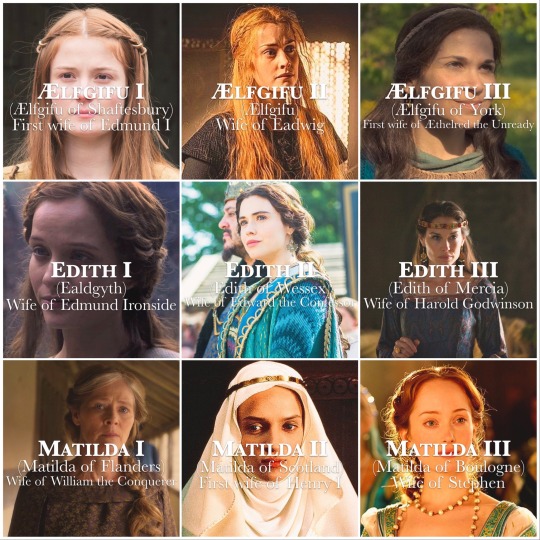



If the English and British consorts had regnal numbers
#i decided not to include the ones where there’s only one consort with that name#since they wouldn’t have a number#Ælfgifu of shaftesbury#Ælfgifu#Ælfgifu of york#ealdgyth#edith of wessex#edith of mercia#matilda of flanders#matilda of scotland#matilda of boulogne#eleanor of aquitaine#isabella of angoulême#eleanor of provence#eleanor of castile#margaret of france#isabella of france#anne of bohemia#isabella of valois#catherine of valois#margaret of anjou#elizabeth woodville#anne neville#elizabeth of york#catherine of aragon#anne boleyn#anne of cleves#katherine howard#katherine parr#phillip ii
135 notes
·
View notes
Text
Loving the house of the dragon discourse on my dash, it’s like what I imagine would happen if Starz adapted a Philippa Gregory novel about the Anarchy (but with dragons)
#I'm not watching the show because I saw some of the first episode and in my opinion it was like they took all#of the worst aspects of the televised Game of Thrones and rolled it into one but I am enjoying watching people fight it out#Especially since it has so much less nuance (there goes that word again) than GOT let alone the ASOIAF books#Anyway Matilda of Boulogne for queen you heard it here first#Call me when David I turns up#By the way you all know I hated the Starz-Gregory adaptations with a burning passion so obviously I am not longing for that#I don't think she ever wrote anything about the Anarchy tho praise be to the lord#Otherwise we might have people Getting Very Heated about why Rhaenyra SORRY I mean Empress Matilda is Problematic#Or why it's shocking how sexist Westeros is that they wouldn't just GIVE her the Crown even though they PROMISED
4 notes
·
View notes
Text
Ages of English Queens at First Marriage
I have only included women whose birth dates and dates of marriage are known within at least 1-2 years, therefore, this is not a comprehensive list. For this reason, women such as Philippa of Hainault and Anne Boleyn have been omitted.
This list is composed of Queens of England when it was a sovereign state, prior to the Acts of Union in 1707. Using the youngest possible age for each woman, the average age at first marriage was 17.
Eadgifu (Edgiva/Ediva) of Kent, third and final wife of Edward the Elder: age 17 when she married in 919 CE
Ælfthryth (Alfrida/Elfrida), second wife of Edgar the Peaceful: age 19/20 when she married in 964/965 CE
Emma of Normandy, second wife of Æthelred the Unready: age 18 when she married in 1002 CE
Ælfgifu of Northampton, first wife of Cnut the Great: age 23/24 when she married in 1013/1014 CE
Edith of Wessex, wife of Edward the Confessor: age 20 when she married in 1045 CE
Matilda of Flanders, wife of William the Conqueror: age 20/21 when she married in 1031/1032 CE
Matilda of Scotland, first wife of Henry I: age 20 when she married in 1100 CE
Adeliza of Louvain, second wife of Henry I: age 18 when she married in 1121 CE
Matilda of Boulogne, wife of Stephen: age 20 when she married in 1125 CE
Empress Matilda, wife of Henry V, HRE, and later Geoffrey V of Anjou: age 12 when she married Henry in 1114 CE
Eleanor of Aquitaine, first wife of Louis VII of France and later Henry II of England: age 15 when she married Louis in 1137 CE
Isabella of Gloucester, first wife of John Lackland: age 15/16 when she married John in 1189 CE
Isabella of Angoulême, second wife of John Lackland: between the ages of 12-14 when she married John in 1200 CE
Eleanor of Provence, wife of Henry III: age 13 when she married Henry in 1236 CE
Eleanor of Castile, first wife of Edward I: age 13 when she married Edward in 1254 CE
Margaret of France, second wife of Edward I: age 20 when she married Edward in 1299 CE
Isabella of France, wife of Edward II: age 13 when she married Edward in 1308 CE
Anne of Bohemia, first wife of Richard II: age 16 when she married Richard in 1382 CE
Isabella of Valois, second wife of Richard II: age 6 when she married Richard in 1396 CE
Joanna of Navarre, wife of John IV of Brittany, second wife of Henry IV: age 18 when she married John in 1386 CE
Catherine of Valois, wife of Henry V: age 19 when she married Henry in 1420 CE
Margaret of Anjou, wife of Henry VI: age 15 when she married Henry in 1445 CE
Elizabeth Woodville, wife of Sir John Grey and later Edward IV: age 15 when she married John in 1452 CE
Anne Neville, wife of Edward of Lancaster and later Richard III: age 14 when she married Edward in 1470 CE
Elizabeth of York, wife of Henry VII: age 20 when she married Henry in 1486 CE
Catherine of Aragon, wife of Arthur Tudor and later Henry VIII: age 15 when she married Arthur in 1501 CE
Jane Seymour, third wife of Henry VIII: age 24 when she married Henry in 1536 CE
Anne of Cleves, fourth wife of Henry VIII: age 25 when she married Henry in 1540 CE
Catherine Howard, fifth wife of Henry VIII: age 17 when she married Henry in 1540 CE
Jane Grey, wife of Guildford Dudley: age 16/17 when she married Guildford in 1553 CE
Mary I, wife of Philip II of Spain: age 38 when she married Philip in 1554 CE
Anne of Denmark, wife of James VI & I: age 15 when she married James in 1589 CE
Henrietta Maria of France, wife of Charles I: age 16 when she married Charles in 1625 CE
Catherine of Braganza, wife of Charles II: age 24 when she married Charles in 1662 CE
Anne Hyde, first wife of James II & VII: age 23 when she married James in 1660 CE
Mary of Modena, second wife of James II & VII: age 15 when she married James in 1673 CE
Mary II of England, wife of William III: age 15 when she married William in 1677 CE
102 notes
·
View notes
Note
Hello, I wanted to ask, since you know so much about history, do you think there is any historical figure that Alicent Hightower may have been partially inspired by? or something similar to her story?
Well, there's any number of powerful ambitious noblewomen and royalty who fought to get their children introduced into or bumped up the line of succession, so you have to narrow in from there.
Given how much GRRM cribbed from the Anarchy for the Dance, I would say that her political position in the Green camp is roughly equivalent to Matilda of Boulogne - although Matilda was Stephen of Blois' wife, not his mother. Stephen's mother was both of royal blood - she was Adela of Normandy, daughter of William the Conqueror - and died really early into the Anarchy and didn't really play the same coordinating role that Matilda did when Stephen was held prisoner.
Also, as @goodqueenaly will no doubt remind me, there's probably someone in the Rois Maudits who would also be a good fit.
35 notes
·
View notes
Text
Why Jaehaera shouldn't have been the mother of Aegon III's kids
(from the perspective of a Green enjoyer)
Obviously no, I do NOT think she deserved to die.
I am a Jaehaera survival enthusiast (please let her run away to Essos at the end of HoTD)
BUT GOD NO! Ok, I get it. I get it. Egg 3's kids are fucked up,
if they had a depressed mother as well as a depressed father it would make sense why they all acted out but Jaehaera DOES NOT deserve to have her grandchild be named after her brother's killer Demon Targaryen.
Wouldn't it be incredibly cruel if Daena was Jaehaera's daughter and she did that despite knowing how that man traumatized her own mother?
Plus the Blackfyres descending from Otto & Alicent would make the rebellions look like an extension of the Dance and narratively that's a shitty choice.
I am under the firm belief that Jaehaera should have gotten an ending paralleling Countess Marie of Boulogne
the way
her father Aegon II paralleled Marie's father Stephen of Blois,
her aunt Rhaenyra paralleled Empress Matilda,
& her cousin Aegon III paralleled Matilda's son Henry II.
Marie actually had a very interesting story it's a shame George didn't use it. She was a Princess turned Nun turned Countess who was forced to marry and have kids turned Nun again.
Ironically enough, one of her direct descendants Philippa of Hainault would become Queen Consort and the current British royals do in fact descend from both Matilda & Stephen.
Unfortunately it's too late to change that though so Jaehaera should run off to Essos. Aegon III is a bastard already it doesn't matter if his marriage with Daenaera is "invalid" as long as it looks valid but PLEASE keep Jaehaera away from the Blackfyres.
11 notes
·
View notes
Text
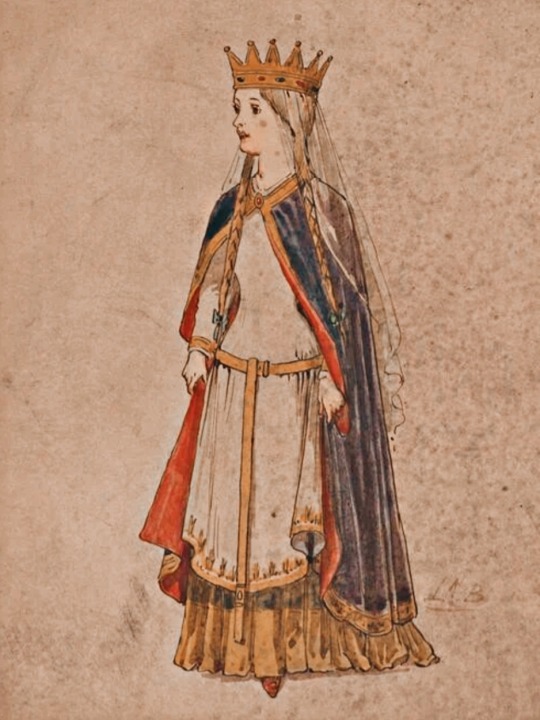
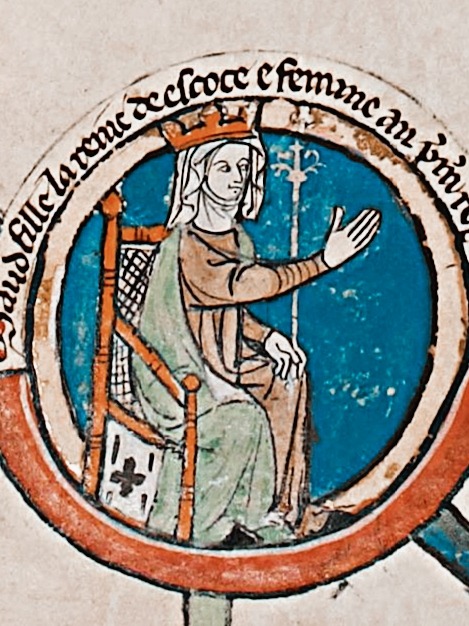
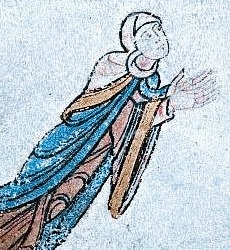
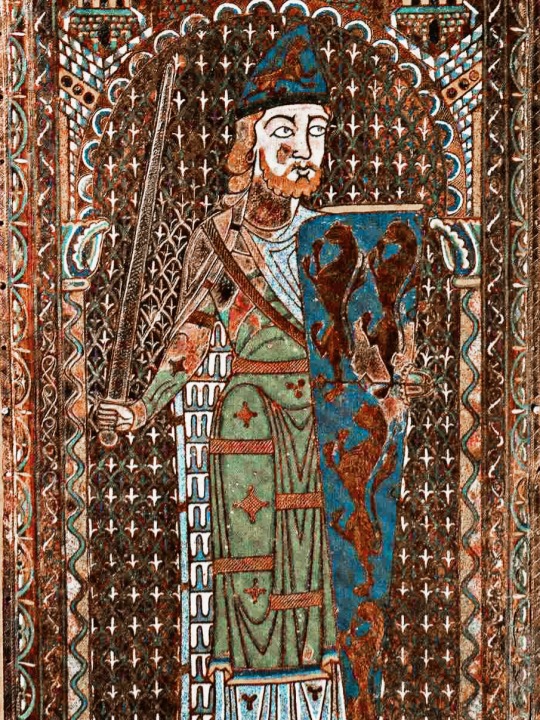
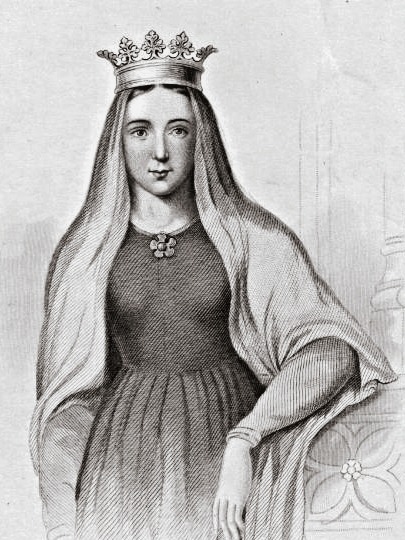



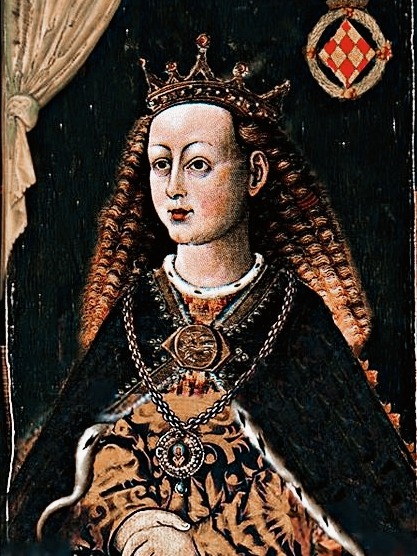
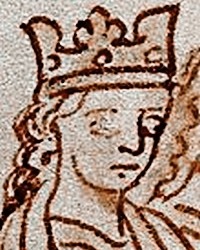
CONSORTS OF ENGLAND SINCE THE NORMAN INVASION (1/5) ♚
Matilda of Flanders (December 1066 - November 1083)
Matilda of Scotland (November 1100 - May 1118)
Adeliza of Louvain (January 1121 - December 1135)
Geoffrey V of Angou (April 1141 - 1148)
Matilda of Boulogne (December 1135 - May 1152)
Eleanor of Aquitaine (December 1154 - July 1189)
Margaret of France (1170 - June 1183)
Berengaria of Navarre (May 1191 - April 1199)
Isabella of Angoulême (August 1200 - October 1216)
Eleanor of Provence (January 1236 - November 1272)
#my photoset.#royal edit#history#historyedit#matilda of scotland#matilda of flanders#adeliza of louvain#geoffrey v#eleanor of aquitaine#margaret of france#berengaria of navarre#isabella of angouleme#eleanor of provence#british royal family#british royals#royals#royal#queens#historical royals#medieval ages#british royalty#historical royalty#consorts of england since norman invasion#english history#plantagenets#house of normandy#house of blois#plantagenet dynasty#consorts of england since norman invasion edit#consorts of england and britiain.
67 notes
·
View notes
Text
Okay but Empress Matilda did so much to secure the crown for Henry II and was such a capable ruler in the Holy Roman Empire and Stephen de Blois' wife, Mathilde of Boulogne, was basically responsible for everything that went right for him during The Anarchy.
And yet Rhaenyra and Helaena are written Like That
6 notes
·
View notes
Text
okay so i need to give some justice to someone who in my opinion, is the most underrated queen in history: eleanor of aquitaine.
eleanor was the sole heiress to a large area of france called aquitaine, and was a very desirable match on the marriage market.

more below the cut :)
at 15, eleanor was married off to king louis vii of france, and they divorced in 1172, the official reason being consanguinity (marrying your cousin). however, rumours from the time suggest that the marriage was very rocky. to avoid being captured and forced into marriage for political reasons, eleanor fled the frenh court and headed for poitiers, in her home state of aquitaine. on the way, she encountered two recorded kidnapping attempts, one the younger brother of her next husband, henry plantagenet. she escaped safely to poitiers, and ruled over the region whilst she contemplated her next move.
in that time, for political advantages, a woman of eleanor's standing needed a powerful husband. she eventually decided on the hot-headed, powerful and influential duke of normandy, henry plantagenet, who i mentioned in the last paragraph. they married quickly in the cathedral at poitiers, because henry was assembling a fleet to invade england, claiming what he said to be his birthright. his mother was the ill-fated empress matilda, who had held the throne of england before being ousted by the current king of england, stephen. henry had royal blood, from his mother the empress, and his grandfather, henry Ist of england.

henry's invasion succeeded, and he reigned over the largest empire the medieval kings had ever seen, controlling more of france than the french. eleanor bore henry ten children.
however, their marriage wasn't entirely happy. once she reached the end of her child-bearing years, eleanor had no real role in the royal household apart from accompanying henry places in her official capacity as queen. understandably, this didn't appeal much to eleanor, so her and henry came to a decision that she would go to aquitaine and rule it by herself, to keep a closer eye on things. she took her second and favourite son with her, richard (soon to be the lionheart) in the capacity of her apprentice.
whilst she was in aquitaine, relations were becoming rocky between her husband henry ii and their eldest son, his namesake, the young henry. at the age of fourteen, young henry was crowned co-king (a typically french custom) by his father to demonstrate his power. after a few years, young henry became resentful of his position, as he had no real power, and all governmental decisions were made by his father. when young henry held a christmas court in normandy in 1171, many noblemen who were becoming disillusioned with his father began to drip poison in the co-king's ear. eventually, henry turned against his father.
in 1173, henry, along with his brothers richard and geoffrey, rebelled, and were joined by their mother, eleanor. the rebellion lasted for eighteen months, and was supported by many influential nobles, namely the counts of flanders and boulogne, and the kings of france and scotland. against the odds, henry ii managed to put down the rebellion, and crushed the scots forces at alnwick. this was the day after doing public penance for the messy and brutal death of the past archbishop of canterbury, thomas becket.
henry forgave his sons, and on the 30th september 1174, "King Henry, the king's son, and his brothers, returned to their father and to his service, as their lord". in simpler words, henry had everyone back in their boxes.
however, eleanor didn't get off quite as easily as her sons. she was condemned to a lifetime of house arrest, and was only released upon henry's death.
there is a myth that eleanor tried to escape from poitiers and go to the french court where her sons were, but was betrayed by her attendants and brought to henry and arrested. however, there is little proof of it, and it is most likely untrue.
anyways, that was a crash course in the story of eleanor of aquitaine! those who are already interested in eleanor's story will notice that i have somewhat excluded any mention of thomas becket, but that is only for the reason that the whole affair is too complicated and would take far too long to explain for just a tumblr post.
let me know if you would like to see more of these, and if you do, my asks are open if you have any recs!
love sophie ❤️
#as i said let me know if you want to see more of these#eleanor of aquitaine#henry ii#history#revolt#thomas becket#history snippets#aquitaine#richard the lionheart
3 notes
·
View notes
Text
"I wound up on the other side of the door. Half my face was anesthetized. Maybe I hadn't felt the punch." Thank you Mr Olesha very cool. Can you please tell me more about Cleopatra or maybe Venice or whatever. Maybe you can tell me something about Pontius Pilate or Marcus Aurelius or Hannibal. And maybe you can teach me about Cyrus or somebody. How about Nicholas II? Or Roosevelt. And Victoria. And Haile Selassie. La Malinche and Henry the Navigator. Edith Wilson or Nadezhda Krupskaya or Matilda of Boulogne. How about Nixon?
1 note
·
View note
Text

Browsing the shelves at York City Library. Am happy to report that the section where the history books are kept is nice and peaceful!
The queens related to the Norman Conquest during the period 1066 to 1167 were:
Matilda of Flanders (William I 'the Conqueror)
Matilda of Scotland (1st wife of Henry I)
Adeliza of Lovain (2nd wife of Henry I)
Matilda of Boulogne (Stephen)
The Empress Maud (daughter of Henry I and wife of (i) Heinrich V Holy Roman Emperor & (ii) Geoffrey 'Plantagenet')
The queens of the Crusades during the period 1154 to 1291 were:
Eleanor of Aquitaine (Henry II)
Berengaria of Navarre (Richard I)
Isabella of Angouleme (John)
Alienor of Provence (Henry III)
Eleanor of Castile (Edward I)
CHECK OVERLAP BETWEEN 1154 & 1167.
1 note
·
View note
Photo

Dream Days Metal Detecting 🤩 Beautiful Rare King Stephen Penny Recovered 💥 Ipswich, Roger, Roundels Type - Stephen penny containing a group of 3 roundels in the reverse legend. A new type for the roundels variant of East Anglia (Spink 1288) which often has three larger roundels in a horizontal line across the reverse. Very rare, and recorded by Martin Allen as EMC 2020.0131. The reverse reads +ROGER:ON:GIhEVI, so this is a coin of the Ipswich moneyer Roger. This is a new type for a moneyer previously known in Stephen types 1 and 2, and in the Roundels type, which is a local Suffolk variant of type 1. Images courtesy of Jason Jones.I One of the very distinctive group of coins from East Anglian mints (Ipswich, Thetford, Sudbury and Bury St Edmunds) with three roundels on the reverse. Stephen was captured at the battle of Lincoln, 2 February 1141, and the coins were struck under the auspices of his wife, Matilda of Boulogne, who was tireless in raising funds, and armies, while her husband was in captivity. The roundels are a reference to Matilda's family badge of the House of Boulogne. #xpdeusmetaldetecting #kingstephen #metaldetectingfindsuk #metaldetecting #norfolkbuttonboy #coinage #fyp #foryou #hobby #photooftheday #picoftheday #treasurehunting #silver #history #searching #regton @xpmetaldetectors #sondeln @regtondetectors #hammeredcoin #fyp #instagood #instagram #instapic #justdetect @justdetect #regtonfinds @capture._earth #metaldetectorist #medieval #treasurehunter @treasurehuntingmagazine @thesearchermag #dirtfishing #coinhunting #treasurehunter #coin #WhatGetsYouOutdoors @outdoorchanneltv @THE_HUNTER.WORLD https://www.instagram.com/p/ChZ80Gvq2cf/?igshid=NGJjMDIxMWI=
#xpdeusmetaldetecting#kingstephen#metaldetectingfindsuk#metaldetecting#norfolkbuttonboy#coinage#fyp#foryou#hobby#photooftheday#picoftheday#treasurehunting#silver#history#searching#regton#sondeln#hammeredcoin#instagood#instagram#instapic#justdetect#regtonfinds#metaldetectorist#medieval#treasurehunter#dirtfishing#coinhunting#coin#whatgetsyououtdoors
0 notes
Text

Consorts of England and Britain
House of Blois
1 note
·
View note
Text

♚Medieval queens of England♚
-pt. II-
"As the wives, mothers, and daughters of kings, medieval queens acquired their status in one of two ways, either through marriage or, less commonly, through inheritance. The experience of being a queen, in particular as partner to the king, the development of the office of the queen, and the role of queen regent evolved over time with medieval monarchy, and queenship varied across regions as different legal codes and customs informed female inheritance. Women who became queens through marriage often shared the experience of straddling two cultures and two families (natal and marital), and, thus, they were alien outsiders who simultaneously had the greatest access to the center of power, the king. Often women who became queens were not native to the territory with which they became associated and, thus, the names by which they are known, for example, Blanche of Castile, may be misleading: Blanche, who was from Castile, was queen of France through marriage. Queens thus served as intercessors, patrons, and cultural innovators as well as operated as great lords, as rulers, and often, but not always, as mothers. The historiography of medieval queenship is equally varied, beginning with positivist-inspired biographies of the 19th century and subsequently influenced by developments in social history during the 1960s and 1970s and by interdisciplinary and feminist approaches in recent decades. Currently, scholarship simultaneously seeks to recover the histories of individual queens, to understand the specifics of the queen’s office within the institution of the monarchy, and to understand how gender operated at the highest levels of political, cultural, and economic power in the Middle Ages."
Source: oxfordbibliographies.com
#perioddramaedit#history#edit#history edit#middle ages#medieval queens#english history#sigrid the haughty#ealdgyth#edith of wessex#matilda of flanders#matilda of scotland#adeliza of louvain#matilda of boulogne#eleanor of aquitaine#margaret of france#women in history#women of history#historical figures#hailee steinfeld#charlize theron#natalie dormer#isolda dychauk#marina ruy barbosa#jodie comer#medieval history#medieval england#11th century#12th century#13 th century
47 notes
·
View notes
Text
Ages of English Princesses at First Marriage
I have only included women whose birth dates and dates of marriage are known within at least 1-2 years, therefore, this is not a comprehensive list. The average age at first marriage among these women was 16.
This list is composed of princesses of England when it was a sovereign state, prior to the Acts of Union in 1707.
Eadgyth (Edith) of England, daughter of Edward the Elder: age 20 when she married Otto the Great, Holy Roman Emperor in 930 CE
Godgifu (Goda) of England, daughter of Æthelred the Unready: age 20 when she married Drogo of Mantes in 1024 CE
Empress Matilda, daughter of Henry I: age 12 when she married Henry, Holy Roman Emperor, in 1114 CE
Marie I, Countess of Boulogne, daughter of Stephen of Blois: age 24 when she was abducted from her abbey by Matthew of Alsace and forced to marry him, in 1136 CE
Matilda of England, daughter of Henry II: age 12 when she married Henry the Lion in 1168 CE
Eleanor of England, daughter of Henry II: age 9 when she married Alfonso VIII of Castile in 1170 CE
Joan of England, daughter of Henry II: age 12 when she married William II of Sicily in 1177 CE
Joan of England, daughter of John Lackland: age 11 when she married Alexander II of Scotland in 1221 CE
Isabella of England, daughter of John Lackland: age 21 when she married Frederick II, Holy Roman Emperor, in 1235 CE
Eleanor of England, daughter of John Lackland: age 9 when she married William Marshal, Earl of Pembroke in 1224 CE
Margaret of England, daughter of Henry III: age 11 when she married Alexander III of Scotland in 1251 CE
Beatrice of England, daughter of Henry III: age 17 when she married John II, Duke of Brittany in 1260 CE
Eleanor of England, daughter of Edward I: age 24 when she married Henry III, Count of Bar in 1293 CE
Joan of Acre, daughter of Edward I: age 18 when she married Gilbert de Clare, Earl of Gloucester in 1290 CE
Margaret of England, daughter of Edward I: age 15 when she married John II, Duke of Brabant in 1290 CE
Elizabeth of Rhuddlan, daughter of Edward I: age 15 when she married John I, Count of Holland in 1297 CE
Eleanor of Woodstock, daughter of Edward II: age 14 when she married Reginald II, Duke of Guelders in 1332 CE
Joan of the Tower, daughter of Edward II: age 7 when she married David II of Scotland in 1328 CE
Isabella of England, daughter of Edward III: age 33 when she married Enguerrand VII, Lord of Coucy in 1365 CE
Mary of Waltham, daughter of Edward III: age 16 when she married John IV, Duke of Brittany in 1361 CE
Margaret of Windsor, daughter of Edward III: age 13 when she married John Hastings, Earl of Pembroke in 1361 CE
Blanche of England, daughter of Henry IV: age 10 when she married Louis III, Elector Palatine in 1402 CE
Philippa of England, daughter of Henry IV: age 12 when she married Eric of Pomerania in 1406 CE
Elizabeth of York, daughter of Edward IV: age 20 when she married Henry VII in 1486 CE
Cecily of York, daughter of Edward IV: age 16 when she married Ralph Scrope in 1485 CE
Anne of York, daughter of Edward IV: age 19 when she married Thomas Howard in 1494 CE
Catherine of York, daughter of Edward IV: age 16 when she married William Courtenay, Earl of Devon in 1495 CE
Margaret Tudor, daughter of Henry VII: age 14 when she married James IV of Scotland in 1503 CE
Mary Tudor, daughter of Henry VII: age 18 when she married Louis XII of France in 1514 CE
Mary I, daughter of Henry VIII: age 38 when she married Philip II of Spain in 1554 CE
Elizabeth Stuart, daughter of James VI & I: age 17 when she married Frederick V, Elector Palatine in 1613 CE
Mary Stuart, daughter of Charles I: age 10 when she married William II, Prince of Orange in 1641 CE
Henrietta Stuart, daughter of Charles I: age 17 when she married Philippe II, Duke of Orleans in 1661 CE
Mary II of England, daughter of James II: age 15 when she married William III of Orange in 1677 CE
Anne, Queen of Great Britain, daughter of James II: age 18 when she married George of Denmark in 1683 CE
27 notes
·
View notes